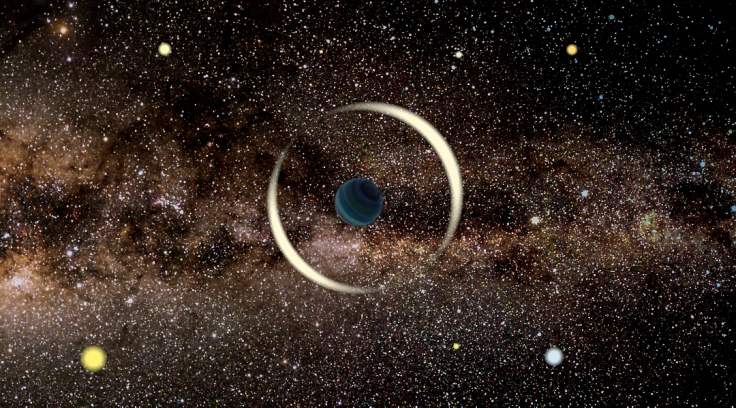NASA Study Makes Search For Exoplanet Life Easier By Studying Water Vapor

New NASA research has provided some important discoveries that will help with our understanding of planets outside the solar system. It aims at refining our search parameters for exoplanets and narrows our focus to make the search for extraterrestrial life more fruitful.
Existing models by NASA uses atmospheric conditions of the planet they are studying to judge whether further study will yield results. According to Yuka Fujii lead researcher of the study from NASA’s Goddard Institute for Space Studies (GISS), New York, and the Earth-Life Science Institute at the Tokyo Institute of Technology, Japan: "Using a model that more realistically simulates atmospheric conditions, we discovered a new process that controls the habitability of exoplanets and will guide us in identifying candidates for further study."
All previous models were a one-dimensional study. They studied exoplanets in the vertical direction only. But, the new model calculates conditions in all three dimensions. The team used this model to simulate the circulation of the atmosphere and observe the intricate details of the swirling clouds. The team says that this new model will help astronauts focus on only the promising prospects and help use observing time more efficiently.
One of the main criteria for life, as we know it, to exist on another planet is temperature. If the planet is in the temperature range for liquid water to exist, it could hold life. According to the press release by NASA, "If the exoplanet is too far from its parent star, it will be too cold, and its oceans will freeze. If the exoplanet is too close, light from the star will be too intense, and its oceans will eventually evaporate and be lost to space."
UV light from the star breaks down the water vapor into its primary constituents — hydrogen and oxygen. The extremely light hydrogen atoms can escape into space. Planets which experience ocean evaporation enter a "moist greenhouse" which causes a humid atmosphere. Scientists have determined that the presence of a moist greenhouse atmosphere could indicate conditions comparable to Earths’ tropics, thereby possessing the ability to sustain life.
In such planets, the clouds on the dayside of the planet act like an umbrella to shield the surface from much of the light. The near-infrared radiation (NIR) of a star could warm the air of the planet enough for the water vapor in these clouds to heat up and rise. As they rise, they carry the water into the stratosphere where it creates the moist greenhouse.
According to the NASA release, "the new model demonstrated that since these stars emit the bulk of their light at NIR wavelengths, a moist greenhouse state will result even in conditions comparable to or somewhat warmer than Earth's tropics. For exoplanets closer to their stars, the team found that the NIR-driven process increased moisture in the stratosphere gradually. So, it’s possible, contrary to old model predictions, that an exoplanet closer to its parent star could remain habitable."
Detecting whether a planet is in a moist greenhouse state can provide pre-information on its ability to host life. This is an important observation for astronomers searching for habitable worlds because there are thousands of planetary systems in our galaxy. The new model of looking for a moist greenhouse atmosphere will help astronomers screen the most promising candidates in the search for planets that could support life. "As long as we know the temperature of the star, we can estimate whether planets close to their stars have the potential to be in the moist greenhouse state," said Anthony Del Genio of GISS, a co-author of the paper, in the NASA release. "Current technology will be pushed to the limit to detect small amounts of water vapor in an exoplanet’s atmosphere. If there is enough water to be detected, it probably means that planet is in the moist greenhouse state."
The paper was published in the Astrophysical Journal on Tuesday and is titled "NIR-driven Moist Upper Atmospheres of Synchronously Rotating Temperate Terrestrial Exoplanets"
© Copyright IBTimes 2024. All rights reserved.




















